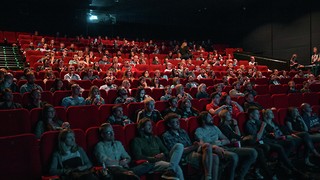Is Cambridge sport sexist?
Blues Hannah Clifford and Liz Mooney discuss their experiences as women athletes

Hannah Clifford:
My experience of sport in Cambridge started, as for many others, with my college boat club. I had never intended to take up rowing, but Girton College Boat Club quickly became a large part of my day-to-day life. With more enthusiasm than funding, we had a great time, and generally fielded several boats a term while providing fodder for the university crews. There was always a healthy rivalry between the men’s and women’s sides, but generally, if one was doing well, the other was heading down the rankings, and we all supported each other when it came to races. While our boatman strongly disapproved of mixed crews (much to the dismay of many Lower Boat Captains, with uneven numbers of new recruits), and each crew trained separately on the water, the ladies would often give the men a run for their money at the weekly club circuit sessions. In terms of funding, we were not a particularly well-off club, but all necessities were covered for whichever crew required them.
During my time with the boat club, several people went on to join the Cambridge University Women’s Boat Club, including the lightweight crew as well as the Blue Boat and Blondie crews. One of the lightweights was a close friend and I got to hear a lot about her experiences, including the 5:55am trains to Ely paid for by her student loan while the heavyweight men got driven in their own minibuses. I got the impression that it was not really a gender inequality issue as the men’s lightweights seemed to get a bit of a rough deal as well – the differences appeared to depend on the history of the crew. I think it is great that both the men’s and the women’s crews now race on the Tideway on the same day, and I hope changes will continue to be made so that all the crews have a fair deal on the training and facilities side of things.
In my third year, having spent the best part of two years in W1, I was ready for a change. Along with a friend, I decided to take up Modern Pentathlon. For those of you who first heard of it in the previous sentence, Modern Pentathlon is a multidisciplinary sport with running, riding, swimming, shooting and fencing. A combination of speed, skill, stamina and strength, and an all-round mental and physical challenge, it is great fun and very accessible. Having started with no experience of shooting or fencing and being at the ‘able to stay alive in water’ stage for swimming, my friend and I have now been involved in two Varsity matches and I have followed her to the position of Ladies’ Captain.
The Modern Pentathlon Club is a very close-knit club, and virtually all training is done as a whole club rather than split into Men’s and Ladies’ sessions. There are women in the fastest swimming lane and running group, and the whole club fences, shoots and rides together. If we divide into groups to optimise training, it is split by ability rather than gender, and more experienced members give their time to coach the less experienced. The Men’s and Ladies’ Varsity matches take place side by side, and equal attention is given to both – admittedly in 2014, when the Men’s side broke Oxford’s 17-year hold on the title, the focus was on them, but surely that was appropriate!
My personal experience of sport in Cambridge is that what matters most is your attitude, rather than your gender, and I think this is the best approach to take. The clubs I have been involved with at both college and university level have had at least one weekly whole-club training session, and for Modern Pentathlon the BUCS Teams are mixed, and men’s and women’s Varsity matches run side by side.
It’s not perfect. In Cambridge, attention (and therefore funding) is often influenced by a sport’s prestige, such as the fact that men’s rowing and rugby get a lot of support at the expense of less well-known teams.
Even though we all joke that Cambridge never changes, there have been some significant positive changes recently in women’s sport. Moving the Women’s Boat Race to the Tideway and the Women’s Rugby Varsity Match to Twickenham in 2015 are both key changes, and I hope that more changes to support all Cambridge sports teams, whether men’s, ladies or mixed, are made over the coming years.
Liz Mooney:
Gender equality is an issue that is close to my heart. While I feel that sometimes women are too quick to blame sexism for why things don’t work out for them, sexism undoubtedly exists and the glass ceiling is a very real problem. This is the case in sport as well as in business or any other sector of work. Only 28 per cent of qualified coaches are women and almost half of all publicly funded national governing bodies relating to sport have less than a quarter of their board as women. The pay gap is obvious as well – in 30 per cent of sports, men get paid significantly more prize money than women, with football, cricket and squash as three of the main offenders. Improvements have been made over the years; the Australian Open in tennis began offering equal prize money in 2001, and athletics made similar moves in 1993, but the job is not complete.
However, this bleak picture of international sport is not necessarily reflected across the spectrum. My experience of sport and gender equality while at university has been almost entirely positive, and any move towards greater equality has had the full support of all members of the Cambridge University Hare and Hounds (CUHH) – the university’s cross-country running club. In fact, the situation now resembles one where there is no discernible difference in the treatment of the men and the women.
It is true that there are more men in CUHH than there are women (there are 24 selected male runners for Varsity cross country and only 14 women) but this reflects a national trend rather than anything within the university. Roughly 1.9 million fewer women than men participate in sport every month, and over 2000 men compared to 865 women competed in the National Cross Country Championships last year. Indeed, CUHH has made improvement in this area, the tireless work of the last two ladies captains (Megan Wilson and Katy Hedgethorne) bringing the quality of the ladies side up to the point where the number of selected women has increased from 12 to 14.
In all the ways it feasibly could have been, my experience as a female athlete in Cambridge has been one of fair and equal treatment. The men and women train together, have socials together and are in every way one club. It is undoubtedly easier for this to occur in cross country than sports such as hockey or football, given that our races tend to be on the same days and in the same locations, but there is a team spirit in CUHH that pays no attention to gender. Indeed, the Ladies’ Varsity Match has been held on the same day and in the same location as the men’s since its conception in 1976. Our current junior committee had 8 women and 12 men, a balance accurately reflecting membership of the club.
While I cannot pretend that CUHH’s track record is one of gender equality throughout every stage of its history, I can say that every time an inequality is pointed out all members of the club have supported it being changed. This has been most noticeable in the criteria with which a Full Blue, Cambridge’s highest sporting accolade, is awarded. When I arrived at the university two years ago it was significantly easier for man to gain a Full Blue than a woman. Every man who ran in the Blues Varsity match and beat a scoring Oxford runner was awarded a Full Blue, whether they won the match overall or not. However, for the women, only four of the six Varsity match contenders were eligible for their Full Blue, and even then only if the team won the match overall. I fell foul of this absurd rule in my first year, being awarded a Half Blue after Varsity despite beating five out of Oxford’s six runners. Thankfully this system has now been changed so that the criteria for a female Full Blue are the same as the male criteria. I in no way wish to devalue the Full Blues awarded to the men before this change – it is the women’s criteria that has been changed to match the men’s after all - I merely wish to emphasise how shocking the existence of such a blatant inequality was, as recently as 2013.
Cross-country running is still not equal – the women’s Blues match is disproportionately short compared to the men’s. CUHH has been entirely behind me in my attempts to solve this by lengthening the course, but the move has been blocked by our Oxford counterparts. They wish to address the balance by shortening the men’s race and a solution has yet to be reached.
I have nothing but praise for CUHH when it comes to gender equality and fair attitudes. It’s just a pity my experience at university is not reflected nationwide.
 News / Tompkins Table 2025: Trinity widens gap on Christ’s19 August 2025
News / Tompkins Table 2025: Trinity widens gap on Christ’s19 August 2025 Comment / A plague on your new-build houses18 August 2025
Comment / A plague on your new-build houses18 August 2025 News / Pro-Palestine activists spray-paint Barclays Eagle Labs18 August 2025
News / Pro-Palestine activists spray-paint Barclays Eagle Labs18 August 2025 News / Pro-Palestine activists urge new Chancellor to ‘condemn Israel’20 August 2025
News / Pro-Palestine activists urge new Chancellor to ‘condemn Israel’20 August 2025 News / Trinity sells O2 Arena lease for £90m12 August 2025
News / Trinity sells O2 Arena lease for £90m12 August 2025









